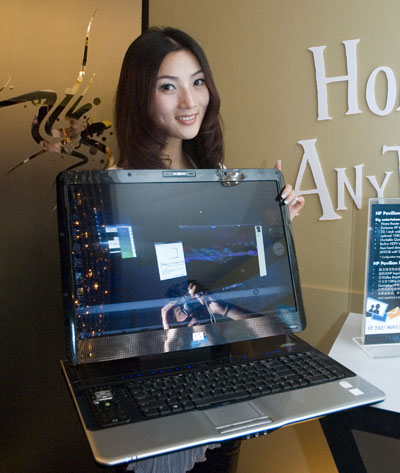
Although it was widely known and respected in the business world for its solid engineering and reliable products, Hewlett-Packard, a huge company with 121,900 employees and revenues of $42.9 billion in 1997, found itself relatively unknown to the general public. Beginning in the late 1990s, Hewlett-Packard sought to expand its presence in the consumer market. To do so, the company initiated a $75 million consumer brand strategy that included an advertising campaign called ‘‘Expanding Possibilities.’’ It was the first time in Hewlett-Packard’s 60-year history that it had tried to shed its reputation as an engineering and business firm for a more consumeroriented image. In 1997 the consumer business accounted for only a quarter of Hewlett-Packard’s revenue, but the company saw this segment as being the place where growth would come most rapidly. As the general public became more focused on technology, Hewlett-Packard wanted to have a more prominent place in the consumer’s mind.
The ‘‘Expanding Possibilities’’ campaign first appeared in the United States on November 11, 1997, in the form of three television spots that featured color printing applications people could employ in everyday situations. The ads ran through January 1998. They were aired in prime time on CBS, ABC, NBC, CNN, A&E, and the Discovery Channel. In Canada the spots ran on the Hockey Night, Bravo!, Showcase, Discover, and Life Network channels. Goodby, Silverstein & Partners of San Francisco created the spots. The original ‘‘Expanding Possibilities’’ campaign was budgeted at $15 million for the United States and at $40 million globally.
The ‘‘Mason’’ spot showed a couple capturing their newborn baby’s wrinkled image on a Hewlett-Packard digital camera. The father downloaded the image onto a Hewlett-Packard computer, created a birth announcement, and E-mailed it to relatives. ‘‘Herta’’ featured a grandmother who took family photographs off the wall, scanned them into her Hewlett-Packard PC, and made a family history book for her children and grandchildren. ‘‘Buck’’ centered on a former Negro Leagues baseball player, Buck O’Neil, and a young friend who created their own baseball cards with O’Neil’s Hewlett-Packard scanner, PC, and printer and then sold them on the Internet.
In March 1998 Hewlett-Packard added a $12 million brand campaign with two more television spots and a print element, all created by Saatchi & Saatchi of San Francisco. The two 30-second spots ran during sports and news programs in the company’s top 10 regional markets in the United States. The schedule later included national exposure on CNN, ESPN, the Discovery Channel, and the Learning Channel. This round of the campaign, unlike the original ads, was aimed toward businesses. In one spot, for example, an airline maintenance worker discovered that it would take five months to produce a revised manual telling workers not to remove the plug in a plane’s oil pan. As an alternative, he quickly updated the manual via the Internet. The print ads appeared in the Wall Street Journal for a month. A third group of ‘‘Expanding Possibilities’’ ads that were released in October 1998 used print media, on-line services, and radio to reach corporate customers, small businesses, home users, and students.



